Archive for the ‘White’ Category
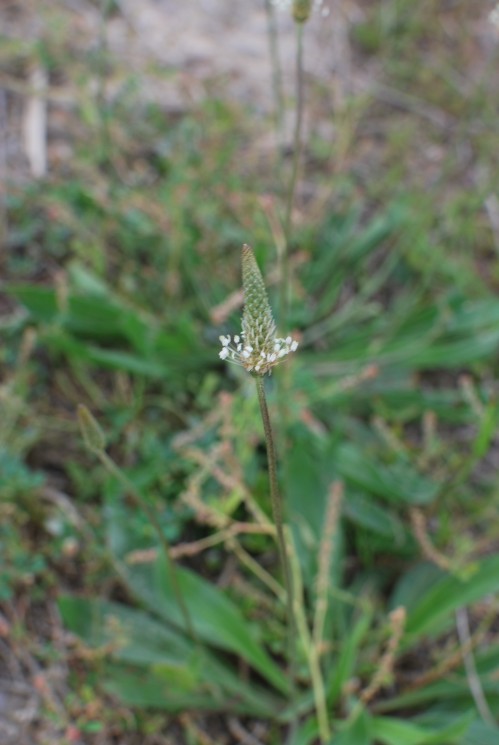
Common Name(s): Ribbon Grass, Narrowleaf plantain, Lamb’s Tongue
Scientific Name: Plantago lanceolata
Family: Plantaginacea
Bloom Period: Spring; March – May
Habitat: Ditches, Roadsides, Dry sandy soils, Disturbed areas, limestone soils
Description:
Calyx -4 united at base ; Corolla – 4 united ; Stamens – 4; Pistil – 1:2; Fruit – capsule with a lid (pyxis)
General Info:
Ribbon Grass is considered a common invasive (alien) species, native to the United Kingdom. Not to be confused with Nolina lindheimeriana, uncommon to the Houston area, but also known as Ribbon Grass.
Commentary: Look for this near ditches. The tiny white flowers are only present very briefly early in Spring. The remaining plain, naked spikes are easy to spot, after the flowers are gone. This is a beautiful, and often overlooked “ditchweed” well worth the hunt.
Gallery:





Common Name(s): Showy Primrose, Amapola, Evening Primrose, Pink Evening Primrose
Scientific Name:
Family: Onagraceae
Bloom Period: Spring, Summer, Fall; March – July
Habitat: Roadsides, Pastures, Prairies, Open Woodlands
Description: Calyx – 4; Corolla – 4; Stamens – 8; Pistil – 1 .Fruit: cylindrical capsule.
General Info: A classic specie of the Evening-Primrose family, which gets its name from the opening of the flowers in the afternoon to evening. (Although, many will open in full sun any time of day, except early morning). This plant grows in colonies from rhizomes, and therefore can be seen in vast blankets across the landscape, especially near roadsides.
Commentary: This flower can be grown easily at home, as the plant can be regenerated from the rhizomes (one season after planting); alternatively, it grows well from seeds harvested in the fall.
Gallery:
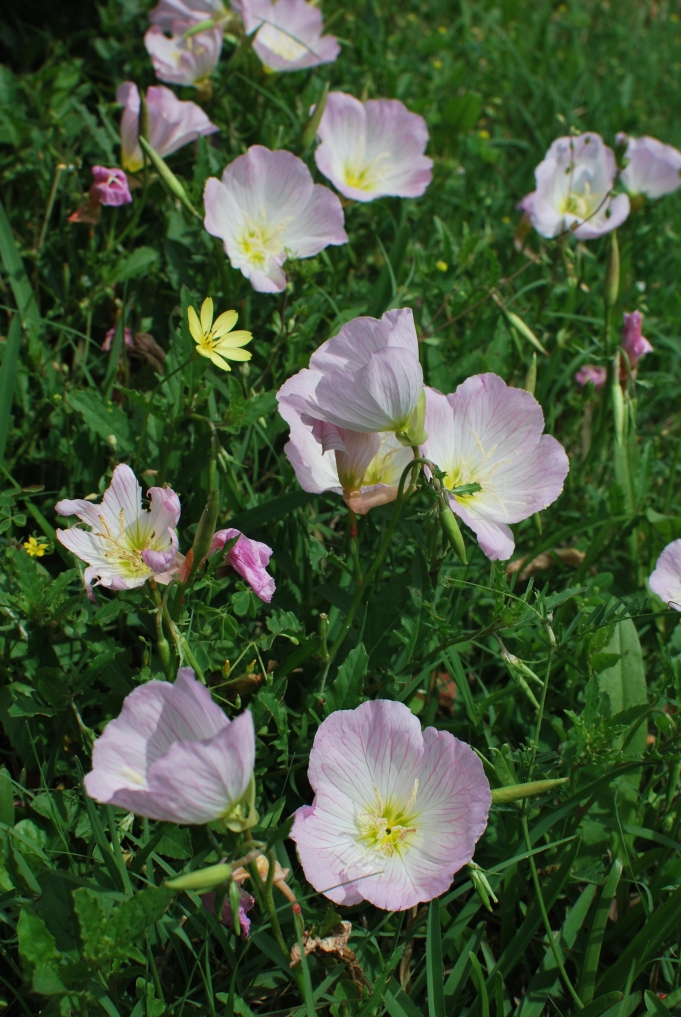




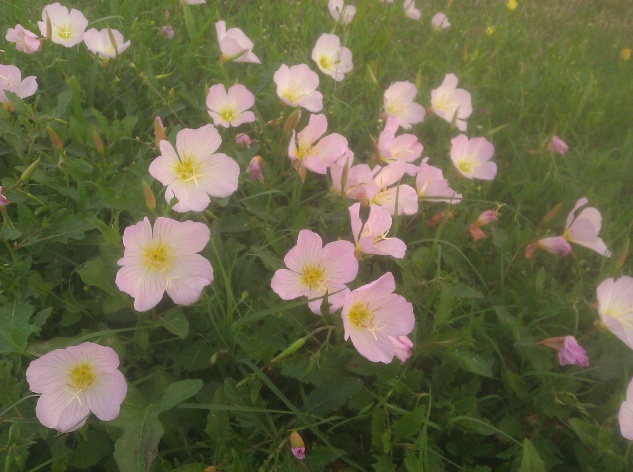

Common Name(s): Philadelphia Fleabane, Philadelphia daisy
Scientific Name:
Family:
Bloom Period: Spring, Fall, Winter; December – May
Habitat: Roadsides, Pastures, Lowlands, Sandy soils, Stream banks, Woodland edges
Description: 150-400 Ray flowers; Calyx – pappus; Corolla – 5- tubular; Stamens – ; Pistil – 2:1 ; Fruit: achene.
General Info: This plant is quite conspicuous, and can grow up to 3 feet tall. Blooms mainly in early spring, then sporadically in Fall and rarely in Winter.
Commentary: This plant was used traditionally to treat sore throats, colds, and stomach ailments. The scientific name actually makes sense: from the Greek: Eri meaning “early” and geron, “old man” for the early white seed heads.
Gallery:





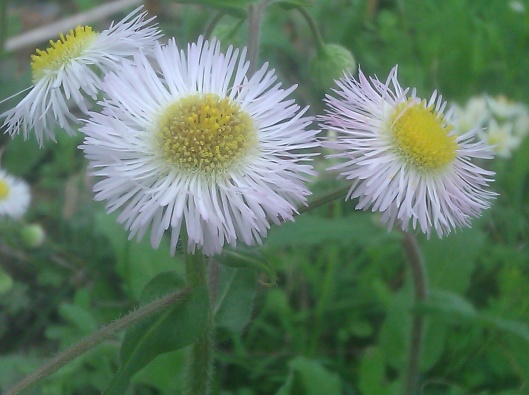

Common Name(s): Blue-Eyed Grass, Dotted Blue-Eyed Grass,
Scientific Name: Sisyrinchium sp. (S. pruinosum; S. langlosii; S. sagittiferum; S. minus; S. albidum)
Family: Iridaceae
Bloom Period: Spring, March – May
Habitat: Clay, Sand, Meadows, Prairies, Pastures, open woodlands,
Description: Solitary or terminal clusters. Callyx -3; Corolla – 3; Stamens – 3 yellow; Pistil 3; Papery bracts
General Info: These flowers burst suddenly in fields everywhere in early Spring. They often grow in clumps, and plant body resembles grass. Flowers close in the afternoon, or if it’s cloudy. There are many colors and fine differences between hybrids and species…not discussed here, simply grouped as Sisyrinchium.
Commentary: This is an especially fun, often overlooked treasure. This springs up over the place in open areas, giving clumps and splashes of colors. There is a seemingly endless variety of shades and hybrids, spanning from blue, to pink, to purple and even yellow! (S. microanthum).
Gallery:






Common Name(s): Toadflax, Toad-flax, Texas Toadflax
Scientific Name: Nutallanthus texanus; Prev. Linaria texana
Family: Scrophulariaceae
Bloom Period: Spring, February – May
Habitat: Dry, sandy soils, Roadsides, uncultivated fields, disturbed areas, open areas of woodlands, prairies, pastures
Description: Terminal raceme. Callyx -5 united at base; Corolla 5: united -2-lipped; Stamens – 4; Pistil- 1:2. Slender spur; Fruit: oval capsule, full gray seeds.
General Info: This is a beautiful lavender colored flower. It is easily overlooked, since it only grows 1-3 feet tall, requires relative shelter, and blooms for only a very short time. However, this gem is well worth hunting for. Its nectar attracts bees, moths and butterflies; the buckeye butterfly (Junonia coenia) larvae feast on this particular species.
Commentary: Check out this fascinating flower structure. Part of the Figwort (Snapdragon) family, the corolla is united to form a 2-lips, spurred at the base. (The spur looks like a little tail on the backside). The nectary for pollinators lies at the base of the ovary, collecting in the backward facing spur. The pollinator must pry the lips apart, and use a long tongue to reach the nectar.
Gallery:
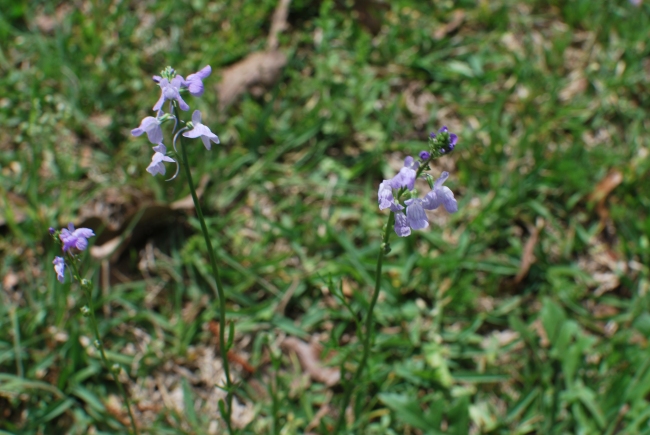




Common Name(s): White Nightshade, Common Nightshade
Scientific Name: Solanum triquetrum
Family: Solanaceae
Bloom Period: Spring, Fall. Up to Year Round in moist areas
Habitat: Thickets, edges of woodlands, disturbed areas,
Description: Callyx – 5; Corolla – 5; Stamens – 5 yellow, Pistil -1. Fruit pea sized red or orange berry when ripe. Poisonous.
General Info: One of my favorite wildflowers, which in shaded, moist areas will grow almost year-round. Also, this plant is extremely hardy, and often thought an obnoxious weed. It blooms early in the Spring. The flowers may seem familiar; tomatoes -another Solanaceae member – have similar flowers, nearly identical in shape and size. However, the Nightshade flowers are white, whereas tomato flowers are all yellow. Also, the berries look like pea-tomatoes, but don’t eat, they are poisonous!! Finally, look carefully for these flowers, as they hang upside down from the branch; this makes them a little hidden, and unexpected, since you brain is probably used to looking for upright flowers.
Commentary:
I have personally witnessed a plant growing in our apartment complex parking lot. Despite the small size of the crack in the pavement, this beautiful, healthy looking Nightshade rapidly grew, and flowered. The plant was razed to the ground by a weed-whacker 3-4 times over the spring, summer and fall. Each time, I watched in amazement as the plant regrew and re-flowered. Finally, it seems it finally disappeared, since I find only a crack. Yet, I keep watch for it to spring up again. Perhaps I should plant a seed in its memory.
Gallery:
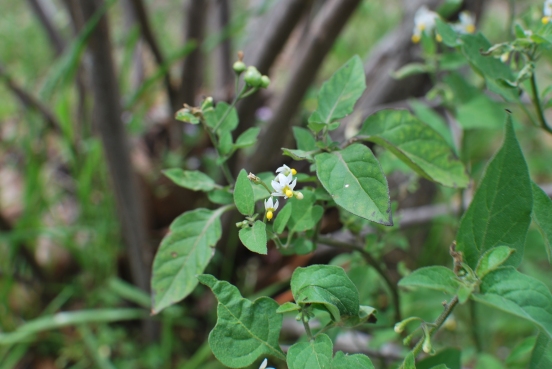






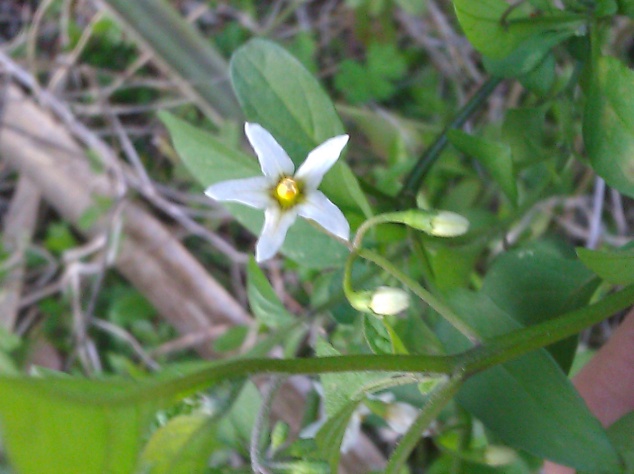

Common Name(s): Wild Onion, Prairie Onion, Cebollita
Scientific Name: Allium canadense
Family: Liliaceae
Bloom Period: Spring, March – May
Habitat: Roadsides, Near wet areas, Edges and openings of woodlands
Description: Many terminal flowers, stalked, forming a cluster in a globe or umbellike look. Also look for wiry hairlike ends of the capsoids. Callyx – 3; Corolla -3; Stamens – 6; Pistil -3; fruit – capsule
General Info: Similar to False Garlic, but the many flowers lie hidden inside a funny looking terminal, solitary purse. Each capsule in the purse can generate a new plant, thus explaining the large groups growing in the vicinity of each other. The entire plant is edible, and quite delicious. The capsules and flowers are especially spicy and tasty. 5 different varieties common in Texas.
Gallery:
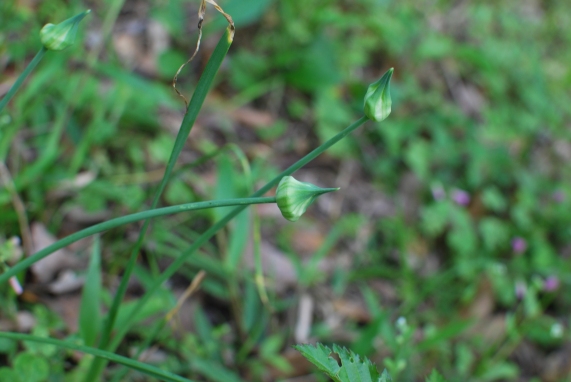 Photo: JamieLeeAnnPhotography
Photo: JamieLeeAnnPhotography 
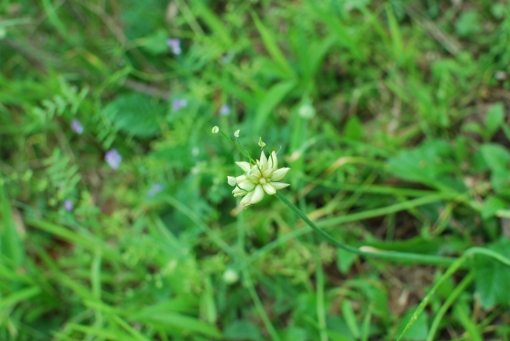 Photo: JamieLeeAnnPhotography
Photo: JamieLeeAnnPhotography  Photo: JamieLeeAnnPhotography
Photo: JamieLeeAnnPhotography
 Photo: JamieLeeAnnPhotography
Photo: JamieLeeAnnPhotography
 Photo: JamieLeeAnnPhotography
Photo: JamieLeeAnnPhotography



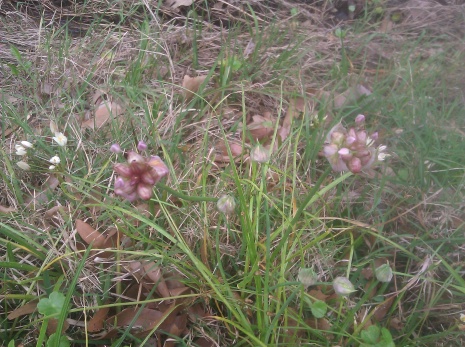


Common Name(s): Ten – Petal Anemone, Carolina Anemone, Southern Anemone, Windflower, Granny’s Nightcap
Scientific Name: Anemone sp.
Family: Ranunculaceae
Bloom Period: Spring, January – April
Habitat: Sandy soils, clay or limestone soils, pastures, prairies, hillsides, edges of woodlands
Description: Terminal, solitary flower on (long) hairy stem, connected to small tuber. Open for full sun, close in evening or clouds. Mostly basal leaves. Calyx – 10-20; Corolla -0 ; Stamens – many; Pistil – many . Fruit: tiny 1-seeded achene, covered by dense wooly hair
General Info:
Gallery:






Common Name(s): False Garlic, Crow Poison, Odorless-onion
Scientific Name: Nothoscordum bivalve
Family: Lilaceae
Bloom Period: Spring
Habitat: Lawns, Ditches, Roadside, Prairie, Disturbed areas, pastures, bottomlands, open woodlands
Description: Flowers – perfect, 1-many atop a leafless stalk (basal leaves). Flowers often in clusters. Calyx-3; Corolla-3, Stamens-6; Compound Pistil-3. Fruit: obovoid capsule.
General Info: This is one of the most conspicuous, earliest bloomers of Spring. In the Houston area, this can bloom as early as January. Usually by late February, this wildflower is widespread across any green space. False garlic is similar to wild onion and garlic in appearance (same family), but not in smell – False Garlic is odor-less. Moreover, despite its similarity, False Garlic is not edible. In areas of moderate moisture, this flower can be found year-round, and can form beautiful large colonies.
Gallery:











































 Photo: JamieLeeAnnPhotography
Photo: JamieLeeAnnPhotography 


















